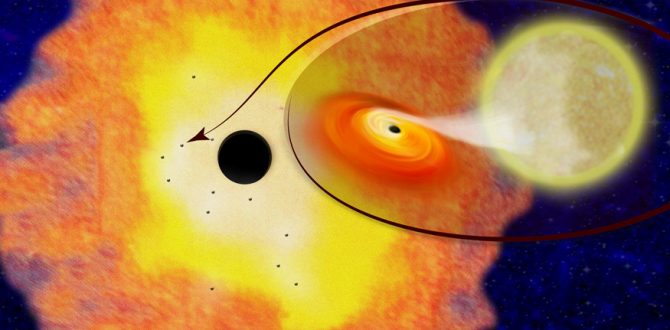Researchers said data from the NASA’s orbiting Chandra X-ray Observatory allowed them to detect a dozen black holes surrounding Sagittarius A*, the mammoth black hole at the centre of our spiral-shaped galaxy.
Black holes, which come in a variety of sizes, are extraordinarily dense entities with gravity so powerful that not even light can escape. Based on these findings, the scientists estimated that up to 10,000 black holes dwell within about 3 light-years of Sagittarius A*.
“That’s a crowd,” Columbia University astrophysicist Chuck Hailey, lead author of the study published in the journal Nature, said on Thursday.
Sagittarius A*, boasting 4 million times the mass of our sun, is located 26,000 light years from Earth. A light-year is the distance light travels in a year, 5.9 trillion miles (9.5 trillion km).
The findings, which confirm decades-old predictions, provide insight into a fundamental aspect of galaxies.
“Since our galaxy is very average, it tells us that the universe is teeming with black holes orbiting near their supermassive black holes because most galaxies have supermassive black holes,” Hailey said.
The newly detected black holes, all produced by the collapse of massive dying stars, are rare ones that captured and bound themselves to a passing star, forming what is called a stellar binary.
Black holes in isolation are hard to find, but the X-ray signatures of stellar binaries allowed their detection.
“Black holes can form farther out from the centre of the galaxy. They gravitationally interact with stars, cosmic collisions so to speak, and lose energy,” Hailey said.
“As they lose energy, they sink to the centre of the galaxy, the same way heavy sediment sinks faster than light sediment in water. They get captured by the gravity of the supermassive black hole, catch a star, and voila, you have something we can see X-rays from.”
Supermassive black holes arise relatively soon after their galaxies are formed, devouring enormous amounts of gas, dust and stars to achieve colossal size. Hailey said, “As one black hole grows to such huge size, even if it was not originally in the exact centre, it will sink into the centre of the galaxy.”
Also Watch
-
 Salman Khan Judgment Reaction: Jodhpur and Mumbai React as Superstar Gets 5 Years in Jail
Salman Khan Judgment Reaction: Jodhpur and Mumbai React as Superstar Gets 5 Years in Jail
-
 Wednesday 04 April , 2018
Wednesday 04 April , 2018
YouTube Attack : Four Injured In Shooting At Company Headquarters
-
 Wednesday 04 April , 2018
Wednesday 04 April , 2018
Why CBSE Decided Against Class X Re-Examination
-
 Monday 02 April , 2018
Monday 02 April , 2018
Terminator Says ‘I’m Back’ : Arnold Schwarzenegger Wakes Up From Heart Surgery in Style
-
 Monday 02 April , 2018
Monday 02 April , 2018
Bharat Bandh Explainer: Why Dalits Took To The Streets in Protest


YouTube Attack : Four Injured In Shooting At Company Headquarters

Why CBSE Decided Against Class X Re-Examination

Terminator Says ‘I’m Back’ : Arnold Schwarzenegger Wakes Up From Heart Surgery in Style

Bharat Bandh Explainer: Why Dalits Took To The Streets in Protest






